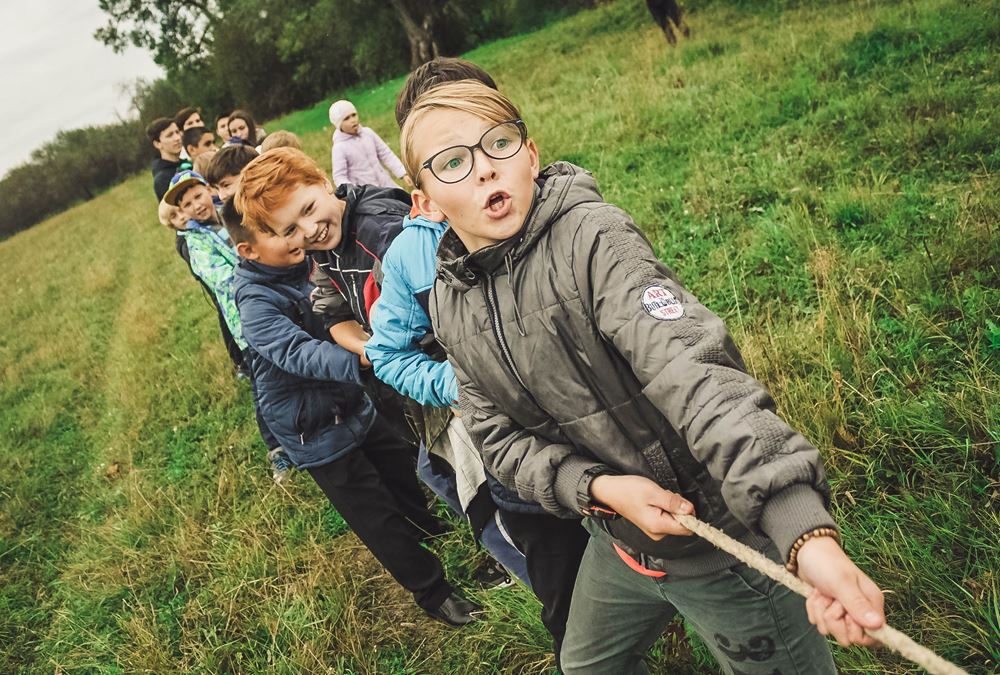- Home
- Business Processes
- Industry Knowledge
- Aerospace Industry
- Automotive Industry
- Banking Domain
- BFSI Industry
- Consumer/ FMCG Industry
- Chemicals Industry
- Engineering & Construction
- Energy Industry
- Education Domain
- Finance Domain
- Hospitality Domain
- Healthcare Industry
- Insurance Domain
- Retail Industry
- Travel and Tourism Domain
- Telecom Industry
- Leadership Skills
- eLearning
- Home
- Leadership
- Communication Skills
- Storming Stage of Team Development
Storming Stage of Team Development
Storming is the second stage of team development and this stage is characterized by a bid for power and inter-personal conflicts. Learn the key factors that occur in the storming stage and the strategies that a team leader can adopt to pass this stage of high winds
Managing Team Conflicts in the Storming Stage
Storming is the second stage of team development and in this stage, members start competing for status, leadership, and control in the group. When group members get to know each other better, the storming stage begins. This stage is characterized by a bid for power. Every team will move through this phase. Some will stay here longer than others. During the Storming stage, conflicts arise as team members try to figure out their roles and delegate tasks. This stage can be difficult, but it can also be highly productive.
Characteristics of the Storming Stage:
Key factors that occur in the storming stage for the team members might include:
- Individuals understand others' behavior and assert their role in the group.
- Team members may compete for a certain role or position on the team.
- The leader’s authority may be challenged as others compete for the position.
- As a result inter-personal conflict starts.
- Members try to resolve the issues related to the task and working relations.
- They also resolve the issues related to the role of the individual in the group.
- Roles and responsibilities get clarified to a certain extent.
- The rules and ways of working as a team start to be defined.
- The team still lacks established processes.
- The team lacks strong interrelationships with their colleagues.
- Some members may feel overwhelmed by how much there is to do.
- Some members may also feel uncomfortable with the approach being used.
- Some may even start questioning the appropriateness of the goals of the team.
- Some may start resisting taking on tasks.
- Members will begin to open up but also confront each other on ideas.
- Can be painful to team members who are reluctant to deal with conflict.
- Politeness tends to begin to wear off and dissension can occur over.
- Control often becomes the primary issue.
- Disagreements can be either very obvious or subtle.
- Sharp fluctuations in attitude about the team and the project's chance of success.
- Arguing among members even when they agree on the real issues.
Managing Conflict during Storming:
As team members struggle over roles and responsibilities, conflict can arise. But it can also be a highly creative stage as ideas are generated and challenged, and important issues are discussed. Identify what some of the problems are they will need to solve. If they're to move to the next stage, team members must learn to voice disagreement openly and constructively while staying focused on common objectives and areas of agreement. During the Storming stage, to help team development, you should focus on team building to ensure that people can get to know one another and not get stuck in seeing each other as competitors.
Suggestions for the Team Lead/Member in this stage:
To make sure that Storming results in positive growth, the team leader needs to:
- Establish process and structure
- Ensure that everyone stays on track with the team's goal, and
- Help the team define a shared vision
- Work to smooth conflict and build good relationships between team members.
- Allow and encourage productive conflict.
- Need to remain professional and objective.
- Allow each member to share their ideas or ask for input.
- Be open to every team member's input
- Help members to understand and appreciate the other members’ knowledge and skills.
- Generally provide support, especially to those team members who are less secure.
- Remain positive and firm in the face of challenges to your leadership or the team's goal.
- Perhaps explain the phases of team development so that people understand why conflict's occurring, and understand that things will get better in the future.
- Compliment team members.
- Review team goals and ground rules
- Address problem behaviors
- Check processes regularly
- Assure the team of progress
- Apply conflict management techniques
Every team will move through this phase. Storming is the most difficult stage for a team to weather, and this is the stage when many teams fail. Some teams may stay here longer than others. Storming is necessary for healthy team development. When team members begin to trust one another enough to air differences, this signals readiness to work things out.
Related Links
You May Also Like
-
In today's innovation-driven economy, understanding how to generate great ideas has become an urgent managerial priority. Managers need to encourage and champion ideas and need to help their organizations incorporate diverse perspectives, which spur creative insights and facilitate creative collaboration by harnessing new technologies. Innovation is the embodiment, combination, and/or synthesis of knowledge in original, relevant, valued new products, processes, or services.
-
Teams are part of the modern organizational culture. Whether you are a team leader or a team member, having a better understanding of how teams work, and being able to identify where the team is in the process, is a critical part of ensuring the team is ultimately successful. Start with the basics and understand what a team is and what role they play in an organization.
-
Appreciative leaders encourage contributions from those around them and facilitate the discussion to mutually solve problems. Understand the concept of Appreciative Leadership and learn about tools to create and ask powerful questions - that lead to new discoveries and possibilities. Instead of focusing on what’s wrong in the workplace, learn about, and build upon what works. Learn in this article the art to apply appreciative inquiry to specific situations and challenges at your workplace.
-
Team Foundation in Forming Stage
This is the first stage of team development. This is the stage when the foundation of the team is laid. During the Forming stage, team members have a high dependence on their leader for guidance. Learn the practical strategies you can use during this stage to help your team develop into a highly effective performing team.
-
Share Information with Your Team
Willingness to share information is the most critical and the very first step in the Journey to employee empowerment and team development. People cannot make good technology or business decisions without information. They need to understand the purpose behind what they are doing and connect with the big picture. People with information feel the need to take the risk of making decisions that enable business growth.
-
Listening is the foundation for good communication. It is also the hardest skill to master. Do you listen to confirm what you already know, or do you listen to explore and learn new things? How can we create receptive communication as a listener? The real art of listening involves awareness and sensitivity to the feelings of the speaker because it is at the feeling level that genuine connection, relationship, and healing occurs.
-
Laissez-faire is a style of leadership that affords the group members a great deal of independence. Tasks are delegated to the group members and they are responsible to see the project through to fruition. Research has shown that this style of leadership leads to the lowest levels of productivity. This article explains this style and covers the implications of having a hands-off approach and the situations where this style could be effective.
-
Tools for Developing Your Team
If a manager has too many weak spots in the talent of the team, the ability to empower the team members to independently execute the project is impaired. Assignments fall behind schedule or stretch out because the needed skills or knowledge are not in place when needed. To successfully execute important projects, hiring talented people, and increasing the talents of existing staff are most important.
-
Generating Ideas using Brainstorming
The brainstorming technique was developed by Alex F. Osborn in 1957 and brainstorming means where a team of members generates a large amount of alternative fruitful ideas on a specific problem without any criticism and then evaluates each idea in terms of their pros and cons. Brainstorming techniques fall into four broad categories: visioning, exploring, modifying, and experimenting.
-
Benefits of Teams in Workplace
The use of formal work teams is commonplace in modern organizations. But why we have teams? What are the benefits or advantages that teams provide for organizations and employees? Do we really need to adopt formal team structures and use team-building approaches in organizations? Read this article to explore and learn the benefits of having formal teams in organizations.
Explore Our Free Training Articles or
Sign Up to Start With Our eLearning Courses

About Us
Learning
© 2023 TechnoFunc, All Rights Reserved










